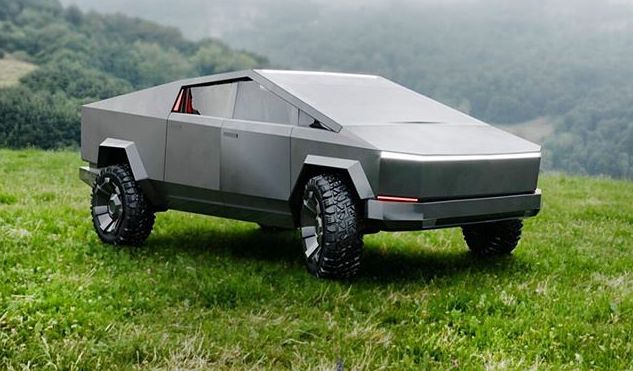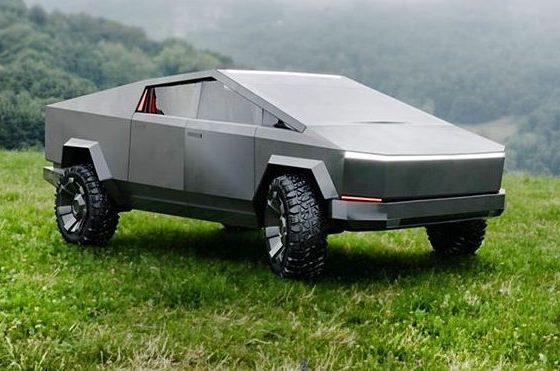

News
Tesla Cybertruck production edges closer as Giga Texas reportedly shifts to 24/7 construction [Video]
Tesla Cybertruck reservation holders will be happy to learn that the electric car maker is reportedly ramping the construction of Gigafactory Texas by shifting to 24/7 operations. According to drone operator and Tesla enthusiast Jeff Roberts, there are now three shifts for Giga Texas’ construction work, meaning there will be continuous progress on the construction site.
“Well, it’s happened; Tesla has effectively doubled [its] productivity by approving 3 crew shifts to work 24 hours per day, 7 days per week- effective IMMEDIATELY!” wrote Roberts in the description of one of his latest videos.
In September, Teslarati reported that Tesla estimated Giga Texas would have its “First Dry-in” by December 30, 2020 and its “First Substantial Completion” by May 1, 2021. A “dry-in” means a building’s shell is sufficiently complete enough to place equipment inside it. With 24/7 construction work, Tesla might be able to meet its December goals and begin trial production for the Cybertruck.
With Model Y production already started and ramping, Giga Texas’s most significant contribution to Tesla would be Cybertruck production. Texas will be the first Gigafactory to produce the Cybertruck, one of Tesla’s most unique and controversial electric vehicles to date, and it probably won’t be easy.
Like early Model 3 production, Tesla has not refined the mass production of the Cybertruck. Plus the all-electric pickup truck has a unique design that utilizes an origami-like process to create its triangular exoskeleton made of 30X steel. Even Elon Musk has said it will be a challenge to mass-produce the Cybertruck.
With three shifts and 24-hour construction going on at Tesla’s factory in Austin, Giga Texas may rival the lightning speed of Giga Shanghai. Tesla China workers were able to complete the first phase of Gigafactory Shanghai less than a year since the beginning of its construction. The first production Model 3s were rolled out exactly one year after its ground-breaking ceremony.
Another drone operator, who closely follows the Texas Gigafactory’s progress, Joe Tegtmeyer, went into detail about how much work was accomplished in Tesla’s Austin construction site thus far. Tegtmeyer noted that Giga Texas workers made a lot of progress in its construction since last week.
Roberts compared Giga Texas’ progress with Giga Berlin, too. “Once upon a time we compared progress with Berlin in terms of “at X months, they were at this point, and in X months Texas is past that point” for example. Well that comparison is over because Giga Texas is about to literally catch up and surpass Germany in Gigafactory creation and then in products off the line! Woo hoo, the competition is REAL everyone!” he wrote.
Once Giga Texas is operational, it will start with Model Y production first, probably while Tesla is refining the production process of its Cybertruck. Tesla’s Fremont Factory already manufactures the Model Y so Giga Texas will only help increase the company’s production numbers in the United States.
Check out Jeff Roberts video of Giga Texas’s night construction below!

News
Tesla FSD fleet is nearing 7 billion total miles, including 2.5 billion city miles
As can be seen on Tesla’s official FSD webpage, vehicles equipped with the system have now navigated over 6.99 billion miles.

Tesla’s Full Self-Driving (Supervised) fleet is closing in on almost 7 billion total miles driven, as per data posted by the company on its official FSD webpage.
These figures hint at the massive scale of data fueling Tesla’s rapid FSD improvements, which have been quite notable as of late.
FSD mileage milestones
As can be seen on Tesla’s official FSD webpage, vehicles equipped with the system have now navigated over 6.99 billion miles. Tesla owner and avid FSD tester Whole Mars Catalog also shared a screenshot indicating that from the nearly 7 billion miles traveled by the FSD fleet, more than 2.5 billion miles were driven inside cities.
City miles are particularly valuable for complex urban scenarios like unprotected turns, pedestrian interactions, and traffic lights. This is also the difference-maker for FSD, as only complex solutions, such as Waymo’s self-driving taxis, operate similarly on inner-city streets. And even then, incidents such as the San Francisco blackouts have proven challenging for sensor-rich vehicles like Waymos.
Tesla’s data edge
Tesla has a number of advantages in the autonomous vehicle sector, one of which is the size of its fleet and the number of vehicles training FSD on real-world roads. Tesla’s nearly 7 billion FSD miles then allow the company to roll out updates that make its vehicles behave like they are being driven by experienced drivers, even if they are operating on their own.
So notable are Tesla’s improvements to FSD that NVIDIA Director of Robotics Jim Fan, after experiencing FSD v14, noted that the system is the first AI that passes what he described as a “Physical Turing Test.”
“Despite knowing exactly how robot learning works, I still find it magical watching the steering wheel turn by itself. First it feels surreal, next it becomes routine. Then, like the smartphone, taking it away actively hurts. This is how humanity gets rewired and glued to god-like technologies,” Fan wrote in a post on X.
News
Tesla starts showing how FSD will change lives in Europe
Local officials tested the system on narrow country roads and were impressed by FSD’s smooth, human-like driving, with some calling the service a game-changer for everyday life in areas that are far from urban centers.

Tesla has launched Europe’s first public shuttle service using Full Self-Driving (Supervised) in the rural Eifelkreis Bitburg-Prüm region of Germany, demonstrating how the technology can restore independence and mobility for people who struggle with limited transport options.
Local officials tested the system on narrow country roads and were impressed by FSD’s smooth, human-like driving, with some calling the service a game-changer for everyday life in areas that are far from urban centers.
Officials see real impact on rural residents
Arzfeld Mayor Johannes Kuhl and District Administrator Andreas Kruppert personally tested the Tesla shuttle service. This allowed them to see just how well FSD navigated winding lanes and rural roads confidently. Kruppert said, “Autonomous driving sounds like science fiction to many, but we simply see here that it works totally well in rural regions too.” Kuhl, for his part, also noted that FSD “feels like a very experienced driver.”
The pilot complements the area’s “Citizen Bus” program, which provides on-demand rides for elderly residents who can no longer drive themselves. Tesla Europe shared a video of a demonstration of the service, highlighting how FSD gives people their freedom back, even in places where public transport is not as prevalent.
What the Ministry for Economic Affairs and Transport says
Rhineland-Palatinate’s Minister Daniela Schmitt supported the project, praising the collaboration that made this “first of its kind in Europe” possible. As per the ministry, the rural rollout for the service shows FSD’s potential beyond major cities, and it delivers tangible benefits like grocery runs, doctor visits, and social connections for isolated residents.
“Reliable and flexible mobility is especially vital in rural areas. With the launch of a shuttle service using self-driving vehicles (FSD supervised) by Tesla in the Eifelkreis Bitburg-Prüm, an innovative pilot project is now getting underway that complements local community bus services. It is the first project of its kind in Europe.
“The result is a real gain for rural mobility: greater accessibility, more flexibility and tangible benefits for everyday life. A strong signal for innovation, cooperation and future-oriented mobility beyond urban centers,” the ministry wrote in a LinkedIn post.
News
Tesla China quietly posts Robotaxi-related job listing
Tesla China is currently seeking a Low Voltage Electrical Engineer to work on circuit board design for the company’s autonomous vehicles.

Tesla has posted a new job listing in Shanghai explicitly tied to its Robotaxi program, fueling speculation that the company is preparing to launch its dedicated autonomous ride-hailing service in China.
As noted in the listing, Tesla China is currently seeking a Low Voltage Electrical Engineer to work on circuit board design for the company’s autonomous vehicles.
Robotaxi-specific role
The listing, which was shared on social media platform X by industry watcher @tslaming, suggested that Tesla China is looking to fill the role urgently. The job listing itself specifically mentions that the person hired for the role will be working on the Low Voltage Hardware team, which would design the circuit boards that would serve as the nervous system of the Robotaxi.
Key tasks for the role, as indicated in the job listing, include collaboration with PCB layout, firmware, mechanical, program management, and validation teams, among other responsibilities. The role is based in Shanghai.
China Robotaxi launch
China represents a massive potential market for robotaxis, with its dense urban centers and supportive policies in select cities. Tesla has limited permission to roll out FSD in the country, though despite this, its vehicles have been hailed as among the best in the market when it comes to autonomous features. So far, at least, it appears that China supports Tesla’s FSD and Robotaxi rollout.
This was hinted at in November, when Tesla brought the Cybercab to the 8th China International Import Expo (CIIE) in Shanghai, marking the first time that the autonomous two-seater was brought to the Asia-Pacific region. The vehicle, despite not having a release date in China, received a significant amount of interest among the event’s attendees.








